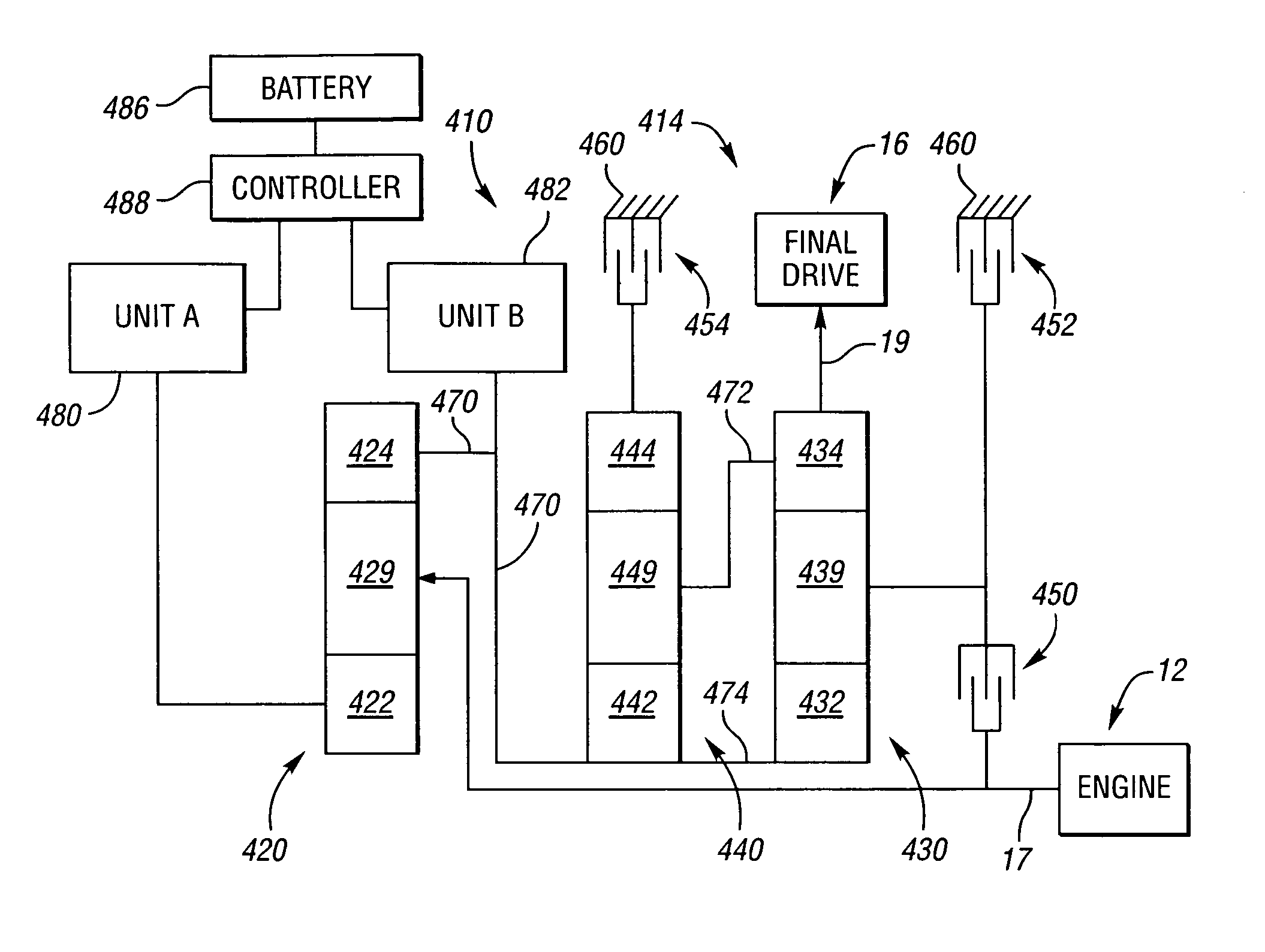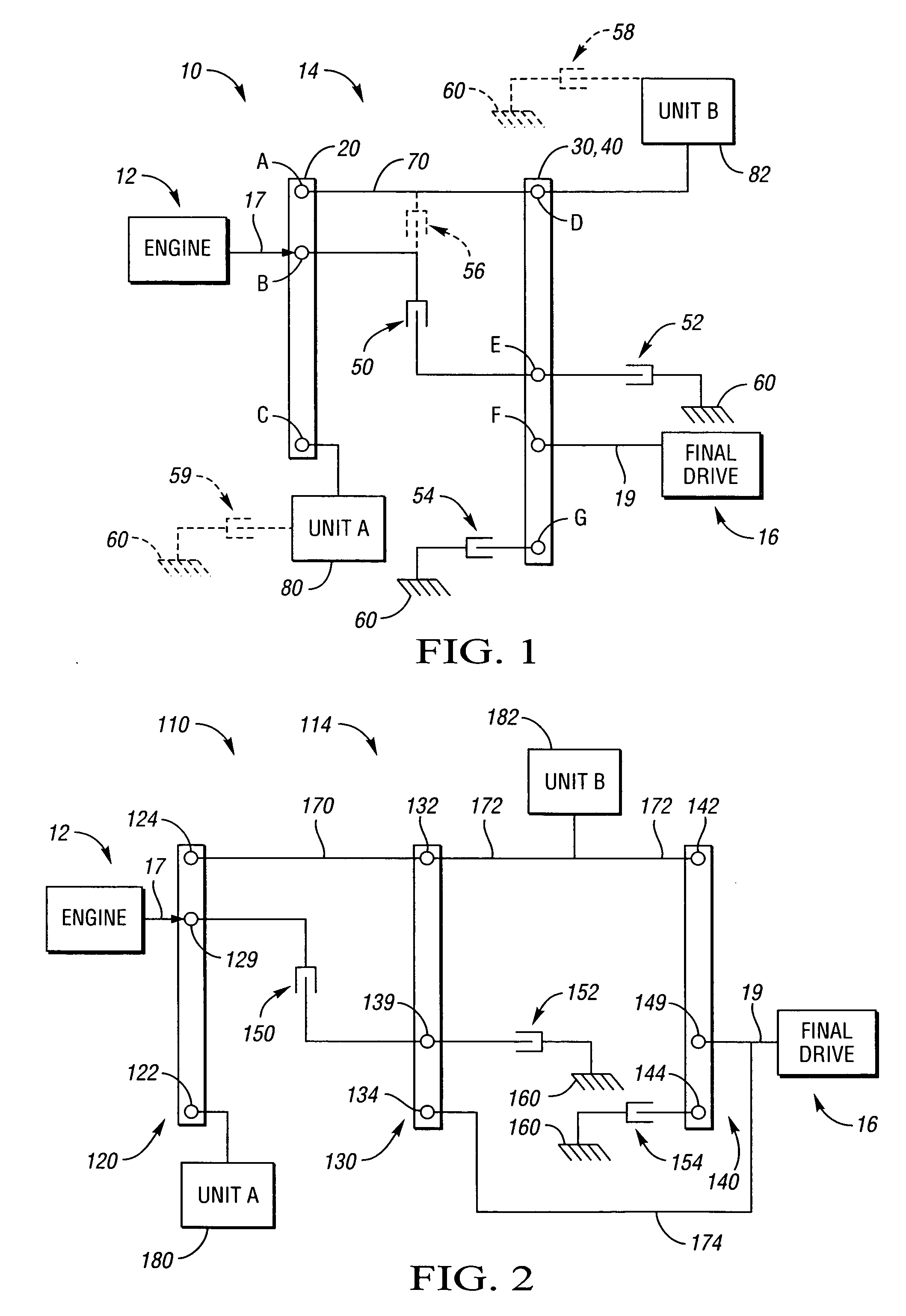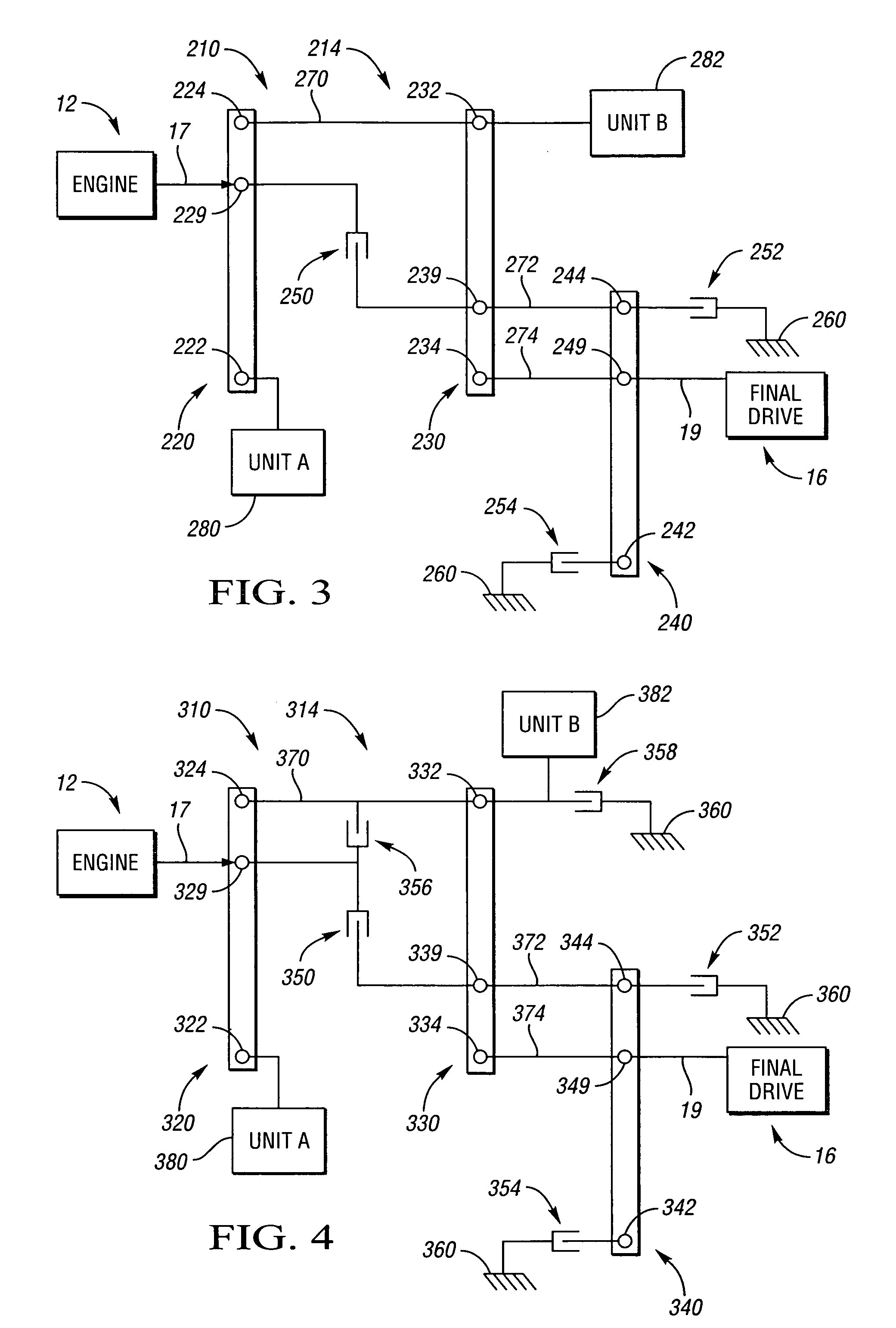Dual mode EVT with input split reverse mode
a reverse mode and dual-mode technology, applied in mechanical equipment, transportation and packaging, gearing, etc., can solve the problems of increasing the fuel consumption and emissions beyond the ideal case, the weight and cost of series electric drives are too high for sufficient electric machinery, and the useful energy loss is increased. , to achieve the effect of reducing the weight of the series electric driv
- Summary
- Abstract
- Description
- Claims
- Application Information
AI Technical Summary
Benefits of technology
Problems solved by technology
Method used
Image
Examples
first preferred embodiment
[0059] Referring to FIG. 2, a first completed preferred embodiment of a powertrain 110 having a transmission 114 within the scope of the invention is illustrated in lever diagram form. The transmission 114 utilizes three differential gear sets, preferably in the nature of planetary gear sets 120, 130 and 140. The planetary gear set 120, represented in lever diagram form, employs a ring gear member 124, a planet carrier member 129 and a sun gear member 122. The ring gear member 124 circumscribes the sun gear member 122. The planet carrier member 129 rotatably supports a plurality of planet gears that meshingly engage both the ring gear member 124 and the sun gear member 122. The input member 17 is secured to the carrier member 129. A first motor / generator 180 is continuously connected with the sun gear member 122. The planetary gear set 120 may be represented by the lever 20 of FIG. 1.
[0060] The second planetary gear set 130 represented in lever diagram form employs a ring gear memb...
PUM
 Login to View More
Login to View More Abstract
Description
Claims
Application Information
 Login to View More
Login to View More - R&D
- Intellectual Property
- Life Sciences
- Materials
- Tech Scout
- Unparalleled Data Quality
- Higher Quality Content
- 60% Fewer Hallucinations
Browse by: Latest US Patents, China's latest patents, Technical Efficacy Thesaurus, Application Domain, Technology Topic, Popular Technical Reports.
© 2025 PatSnap. All rights reserved.Legal|Privacy policy|Modern Slavery Act Transparency Statement|Sitemap|About US| Contact US: help@patsnap.com



